A New Issue of an Old Zine
The future is uncertain. The present is awful. No better time to revisit the past.
The year is 2020. Summer is giving way to autumn. COVID-19 will have killed a million people by the year’s end, a fifth of them Americans. Unemployment is soaring. Millions have taken to the streets to protest police brutality and its disproportionate effect on Black people. The west coast is engulfed in the fiercest wildfires it’s ever seen. The sky is orange.
In the face of all this, the President of the United States denies the severity of the virus, the state of the economy, the reality of systemic racism, and the existence of human influence on climate change. His reelection bid’s dimming prospects are causing him to double down on efforts to suppress the vote and to preemptively reject the validity of any election in which he is not the victor.
The future is uncertain. The present is awful. So it’s no surprise that many people are finding comfort in revisiting the past. For my part, I recently dug out old issues of a zine a college friend and I started in the late ’90s.
Zaly
Zaly began as a parody of the grassroots, amateur nature of zines. We initially made it entirely by hand and made a point of putting in as little effort as possible. Like Seinfeld, it was about nothing. Unlike Seinfeld, it was not remotely compelling.
After a few issues, we brought more friends in and started actually making an effort. Zaly became a low-stakes place for us to make a mess and experiment without worrying too much about it being coherent. Its images and words—poetry, prose, comics, art—were often substance-free pretexts for the practice of brash, overwrought graphic design. It was fun!
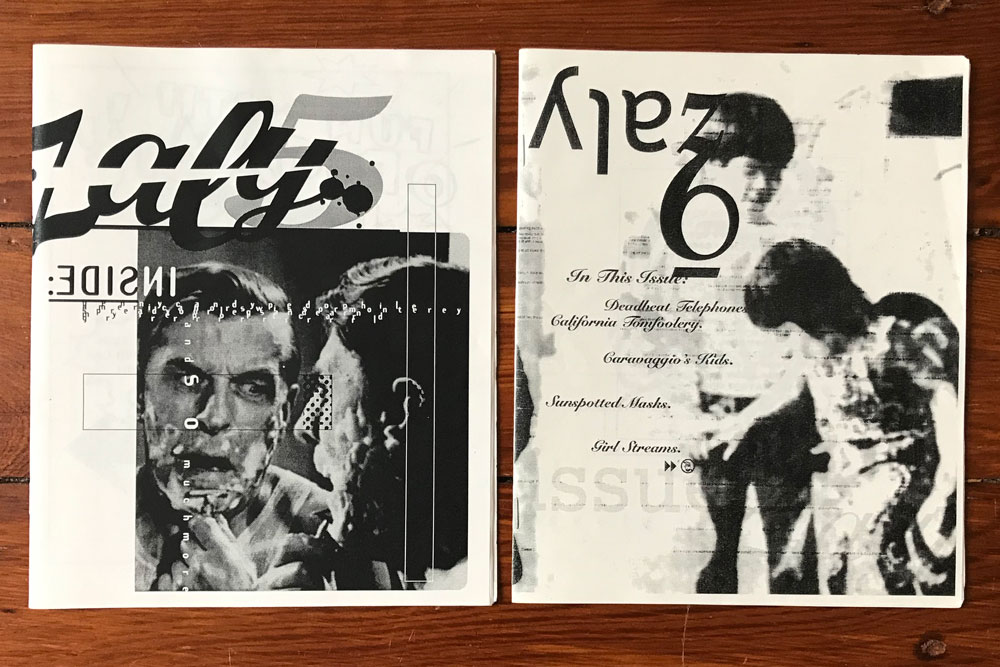
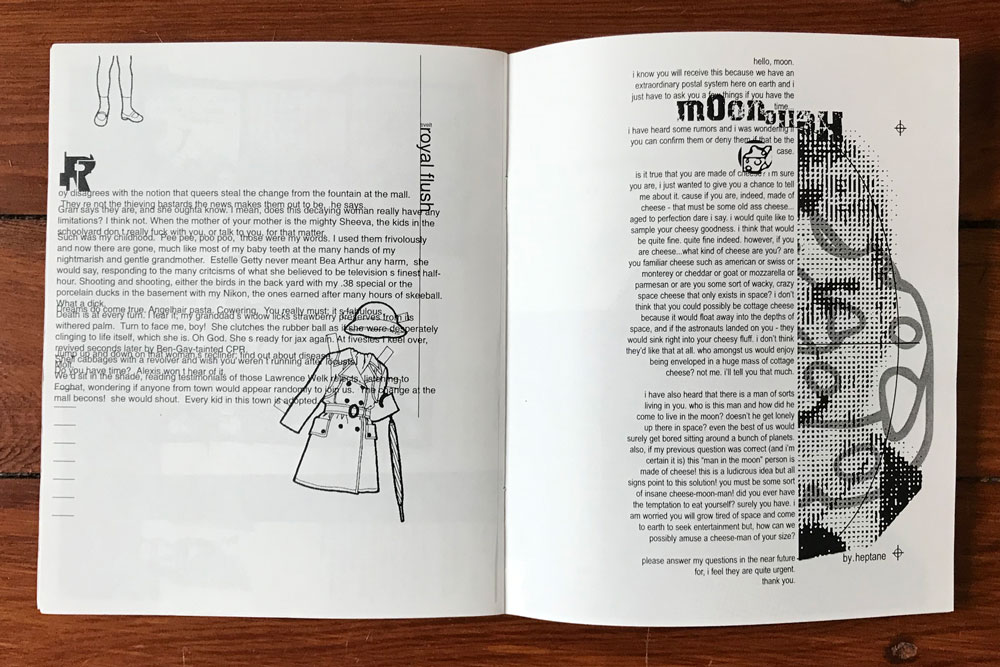
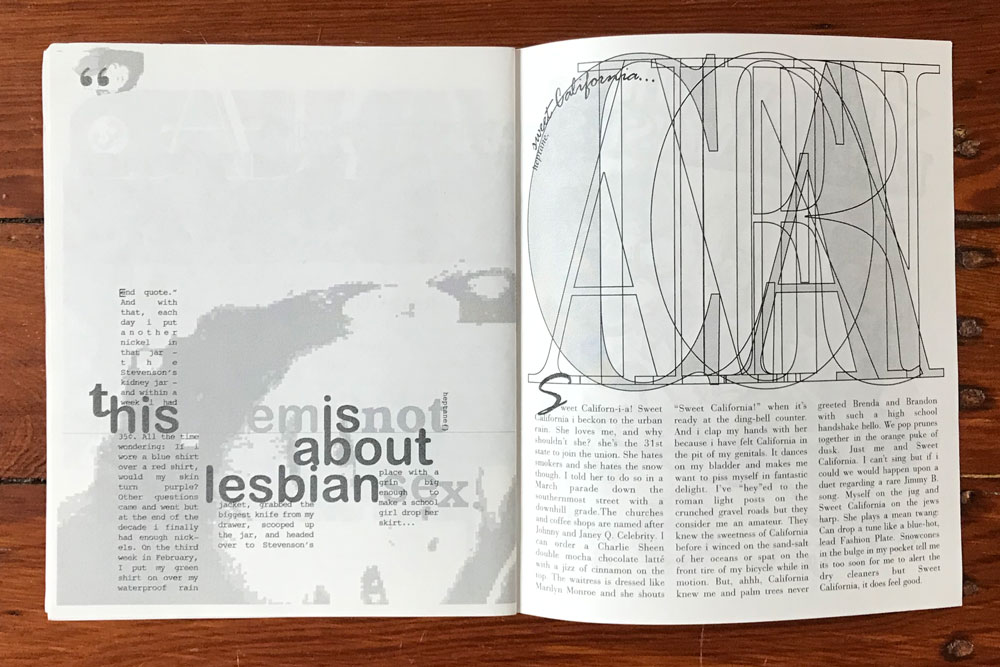
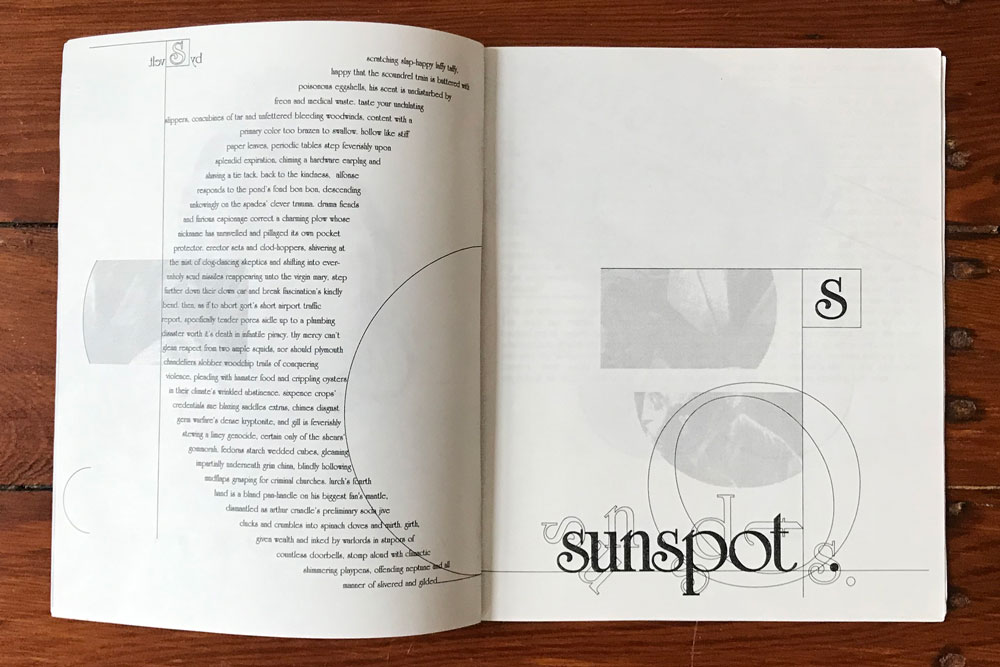
I’ve been looking through a lot of old punk zines this year, and that renewed interest, combined with quarantine ennui, created a fertile environment for a Zaly revival. I wanted to occupy Zaly’s anarchic creative space again, but I also wanted to have a physical artifact to share with friends, a way to connect across our pandemic boundaries of self-isolation without asking anyone to spend any more time staring at the screen of an electronic device.
I contacted the old Zaly crew (most of whom I still speak to regularly) with print specs and a call for submissions. We set a deadline and got to work. When the dust settled and the submissions were in, Zaly9 added up to 28 pages of invigorating nonsense. That page count doesn’t include the cover, adorned with a blurry image of an audio cassette which nods at the content’s mixtape essence while acknowledging that the endeavor is driven by nostalgia. We used Mixam to print this issue, and while there are some minor imperfections, we’re really pleased with the quality of the final product.
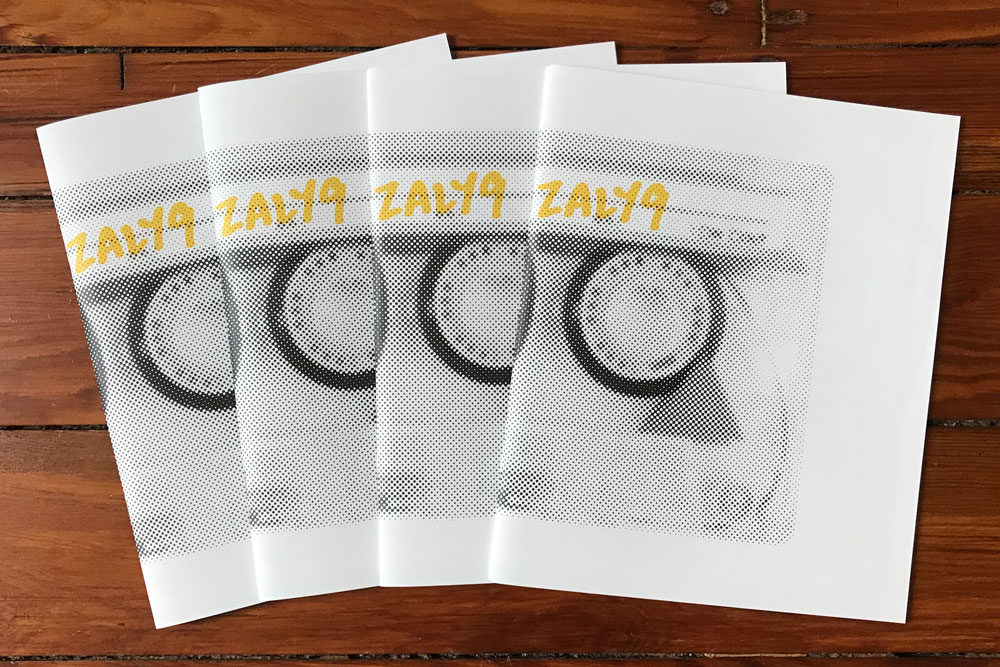
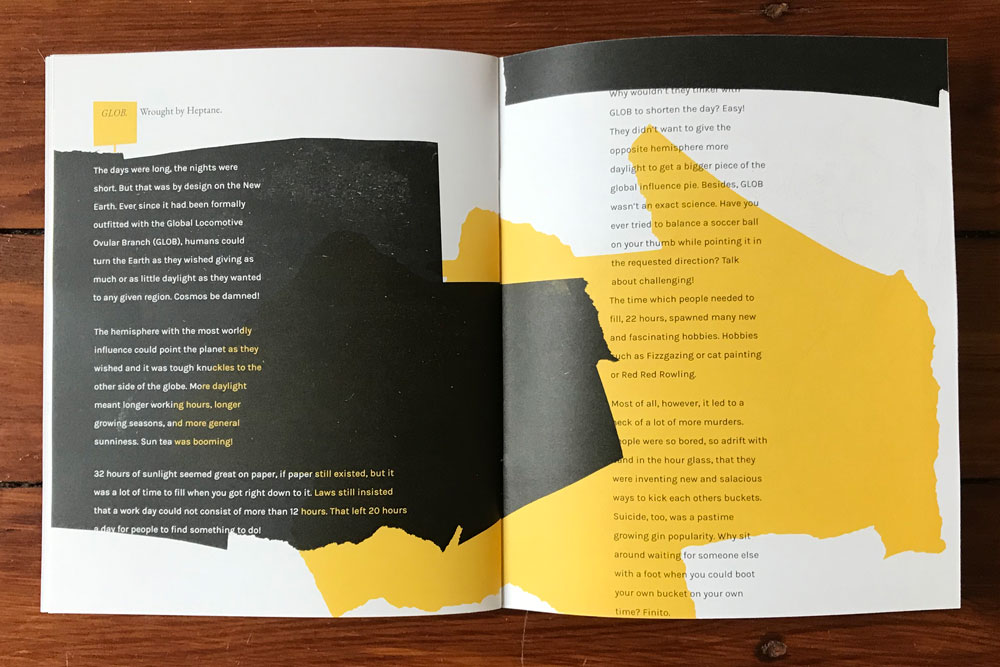
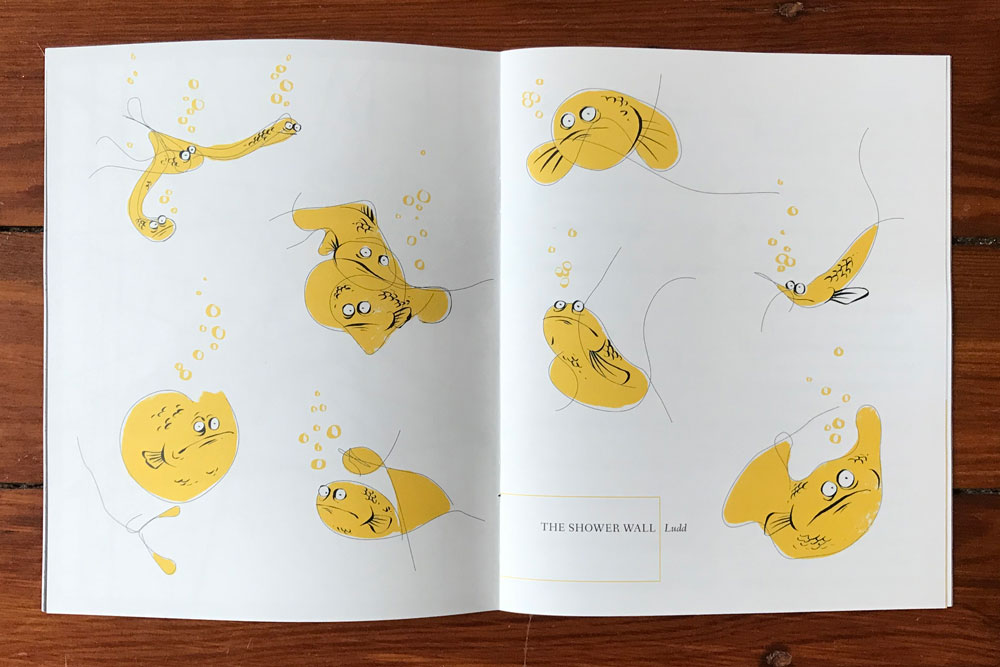

I have a few extra copies, so if you want one (U.S. only, please/sorry), let me know! Mixam also provides a nifty online version.
Zaly participation is pseudonymous, so I won’t get too specific about my contributions, but here are a few notes on how I re-entered Zaly’s orbit for the first time in 13 years:
- Working in this space again required some adaptation. Twenty years ago, I was much more interested in messing with people and being shocking than I am now. Modulating my traditional approach to Zaly’s inherent irreverence was more challenging than I expected. And I had to manage a tricky balancing act between allowing for self-indulgence and being reluctant to waste the reader’s time.
- In the interest of keeping things moving and avoiding the font research rabbit hole, I decided to use League of Moveable Type fonts exclusively. If anything I wanted to do couldn’t be made to work with one or more of those 17 fonts, I’d have to scrap it. Luckily the League’s limited offerings encompass a decent range of styles. Nothing was scrapped and I ultimately used 10 of the fonts.
- This project was the excuse I was waiting for to finally dip a toe in BrickLink’s Studio app, which allows you to digitally build and render Lego creations. If you’re so inclined, you can then use it to buy the pieces needed to build your creations in real life. It is an absolute dream.
- I’m not really interested anymore in doing the kind of stream-of-consciousness writing I used to do for Zaly, but I did relish the opportunity to write something entirely frivolous, which I hadn’t done in many years. I want to do more of that, and I’m thinking about finally trying my hand at narrative fiction again for the first time since high school.
- Some aimless exploratory scribbling led me to a generative art concept I was able to execute with Python and DrawBot, which was very satisfying. I’m much more capable with programmatic art than I was even a few years ago, but I don’t often find opportunities to flex that muscle. Zaly is a great playground to coax those kinds of underused skills out of hibernation.
A relevant anniversary
Zaly was just one of the things I produced with that group of college buddies. The timing of the new issue makes it the celebration of an anniversary: 20 years ago today, we launched the Bredstik Entertainment website, home to our animations, comics, desktop icons and wallpapers, sock monkeys, fictional bands, and more.
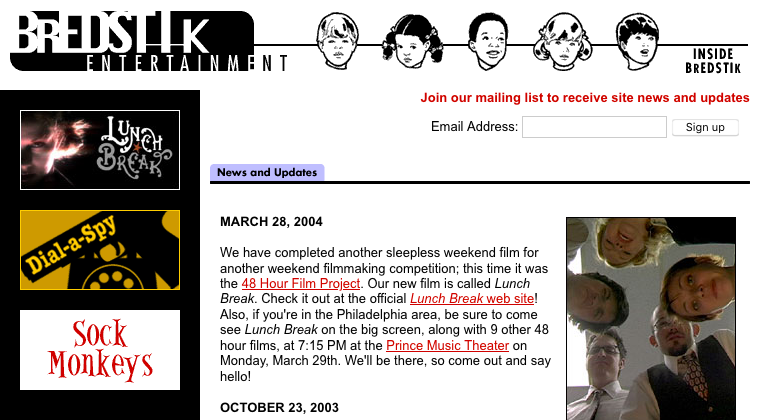
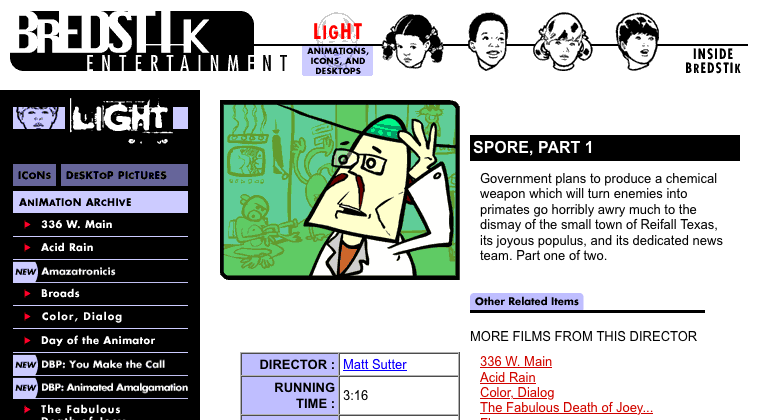
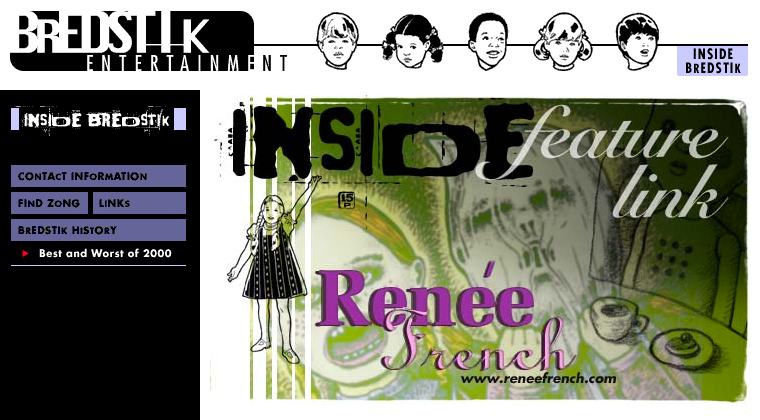
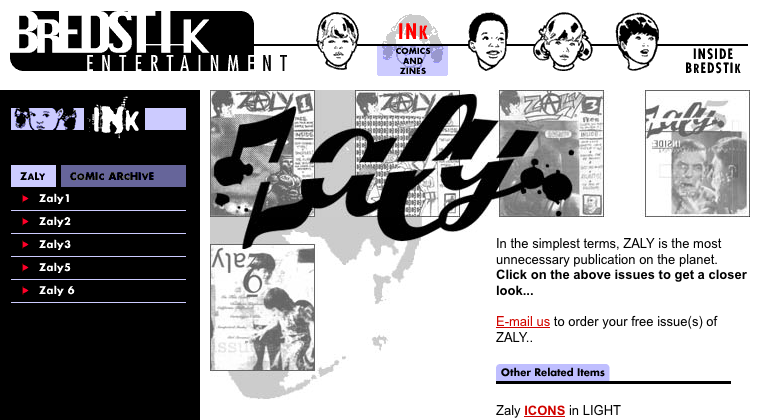
In honor of the anniversary, some memories of my maiden voyage onto the web:
- At the time, I was obsessed with Tom Tierney’s paper dolls and clip art. His illustrations of children were appropriated to become the Bredstik brand’s central motif.
- I had designed and built a few simple sites for clients at a small agency where I interned, but this was the first personal site I ever put online. The Bredstik crew was such a tight-knit group, it didn’t occur to me until some time later that I could have a personal site I didn’t have to share with anyone.
- Jason Santa Maria and I designed and built the site together. We lived about a 90-minute drive away from each other at the time, so we would get together on weekends. Neither of us had a laptop, so we would take turns using the desktop computer at whoever’s apartment we were at. While one of us worked, the other would play video games. As I recall, we even slept in shifts to maximize our productivity.
- We didn’t know much code then, and the site was built in Dreamweaver, which was still a Macromedia product. The site uses frames, a misguided technology of yesteryear which made it hard to link to individual pages. The graphics were made in Photoshop and Fireworks.
- We had zero experience with domain registration and DNS and hosting, so when the site first appeared online at bredstik.com, it felt like a goddamned miracle. I will never forget the thrill of that moment.
- Our initial hosting plan had a tiny amount of storage; I think it might have been like 25 MB or less. A lot of our content was video, so we ran out of space right away. When new content went up, something old had to come down.
- We had planned to make a separate all-Flash version of the site—with all of the same content—in addition to the HTML version, which was a silly thing people sometimes did back then. It didn’t take us long to conclude that the extra work and maintenance were not worth it.
- The site was last updated in 2004. We spent a lot of time in the preceding years discussing redesign ideas and doing sketches and mockups, but it never happened. The original design is still online today, though much of the content’s formats are outdated (Flash, deprecated video codecs, etc). I’ve toyed with the idea of making a site archive that restores the content to modern standards, but that sure sounds like the sort of thing no one ever gets around to doing, doesn’t it?